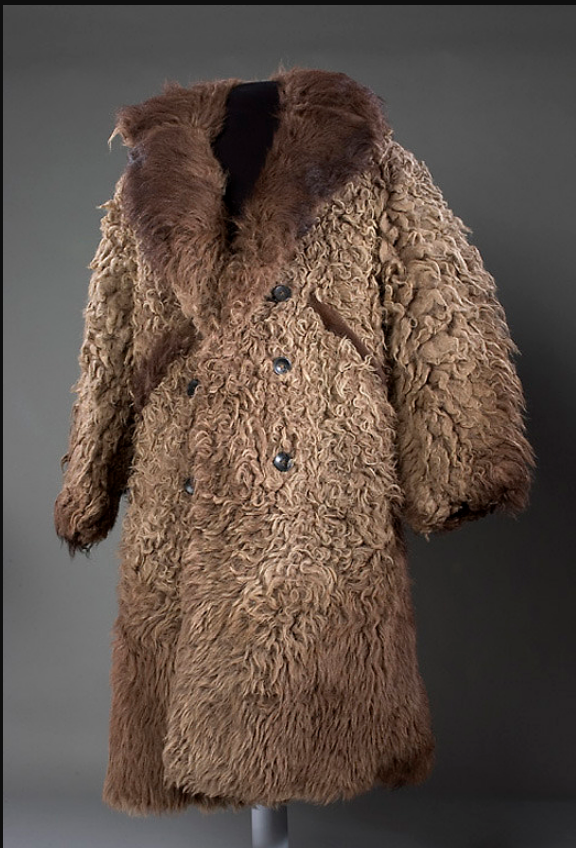Mystery Illustration 78

What is the material and provenance of this coat?
The answer is here.
Or after the jump.
According to legend, this coat was made from the skin of a buffalo killed by Buffalo Bill, and presented by him to Captain J. B. Irvine, Twenty-second U.S. Infantry. Irvine then presented it to Second Lieutenant Albert C. Dalton, Company A, U.S. Infantry., General History, In a life that was part legend and part fantasy, William F. Cody came to embody the spirit of the West. During the Civil War, Cody served first as a Union scout in campaigns against the Kiowa and Comanche; then in 1863 he enlisted with the Seventh Kansas Cavalry, which saw action in Missouri and Tennessee. In 1867, Cody took up the trade that gave him his nickname, hunting buffalo to feed the construction crews of the Kansas Pacific Railroad. According to Buffalo Bill, he killed 4,280 head of buffalo in seventeen months., He is perhaps best known for Buffalo Bill’s Wild West show, a theatrical extravaganza. His show dramatized some of the most picturesque elements of frontier life. It contained a buffalo hunt with real buffalos, an Indian attack with real Indians, and a grand finale that reenacted Custer’s Last Stand, with some Lakota who actually fought in the battle playing a part. The show was enormously successful and traveled the world for three decades., From Brigadier General Albert C. Dalton, US Army (Ret'd), written 26th July 1951:, This coat was made from the skin of a buffalo killed by the celebrated "Buffalo Bill" (Mr. William F. Cody) at the time he was engaged in supplying buffalo meat to the workers on the Union Pacific Railway, and also to the troops of the United States Army in the same area. The skin was presented to Captain Javan B. Irvine 22nd US Infantry who was a famous Indian fighter and a close friend of Buffalo Bill during the days when he was with the army as a guide and Indian Scout. Captain Irvine presented the coat to then 2nd Lieut Albert C. Dalton 22nd Inf. who served in Captain Irvine's Company "A" 22nd Infantry from May 1889 to Aug 1891---when he was commissioned as a 2nd Lieut and assigned to the regiment for duty as an officer. Captain Irvine retired the same year and on leaving the regiment gave the coat to Lieut Dalton., The coat was repaired and the quilted lining put in in place of the old lining in 1910 at the Schuykill Army Factory".
Comments
Take it to Rick at Pawn Stars. He'll check it out.
Posted by Virtual on 10/25/18 at 09:25 AM
Having seen buffalo up close in Yellowstone, and also at the Olympic Game Farm (near Sequim, Washington), it was not hard for me to guess correctly this time.
Posted by Fritz G on 10/25/18 at 11:12 AM
I would have guessed it was made of dog pelts. I believe we've seen an example of a dog coat here, somewhere.
Posted by KDP on 10/25/18 at 09:49 PM
Commenting is not available in this channel entry.

Category: Fashion | Nineteenth Century